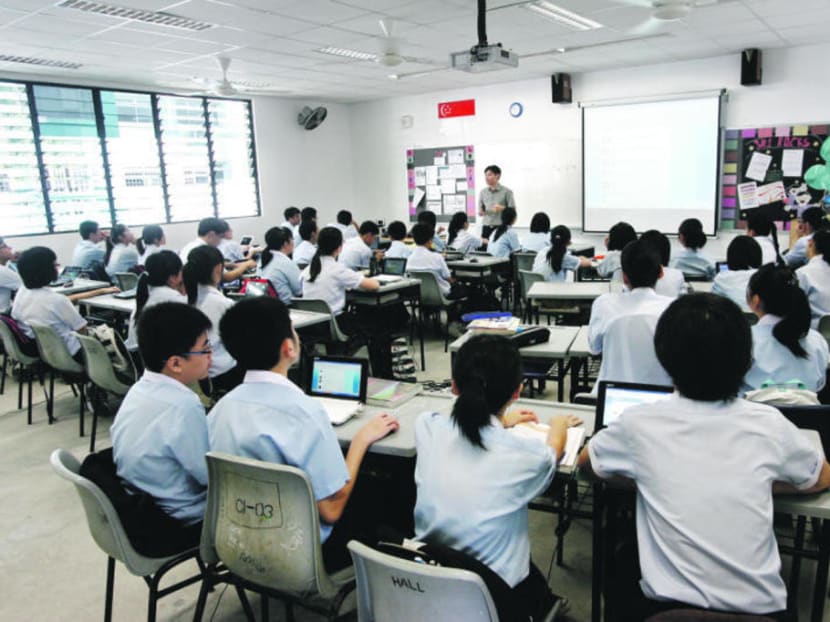Social mixing in schools has improved based on government indicator, ‘must not be left to chance’
SINGAPORE — Social mixing of children from diverse backgrounds in schools should be a deliberate effort and must not be left to chance, said Education Minister Ong Ye Kung on Friday (Dec 27).

A Government indicator shows that social mixing in Singapore schools has improved, Education Minister Ong Ye Kung said on Friday (Dec 27).
SINGAPORE — Social mixing of children from diverse backgrounds in schools should be a deliberate effort and must not be left to chance, said Education Minister Ong Ye Kung on Friday (Dec 27).
Speaking at the annual Appointment and Appreciation Ceremony for Principals at the Shangri-La Hotel, he said that initiatives rolled out by the Government to improve social mixing among students have been fruitful and have contributed to a better mix of students from different backgrounds in schools.
“Our education system is one of the key national platforms that foster such social mixing. The friendships forged in school are the threads that strengthen our social fabric over time,” he said.
Mr Ong said that one indicator which the Government looks at is the number of primary schools that a secondary school’s students come from.
“A higher number means a larger catchment of primary schools, and better mix,” he said.
A guide that the Ministry of Education uses is that every 100 Secondary 1 students in a school should come from 20 or more primary schools.
In 2004, the percentage of non-Integrated Programme (IP) schools that exceeded this guide was only 13 per cent. It surged to 46 per cent in 2014 and increased to 51 per cent this year.
Conversely, the percentage of IP schools that exceeded the guide’s standards was 43 per cent in 2004. The figure jumped to 76 per cent in 2014 and rose to 88 per cent this year.
That means 15 out of 17 IP schools have surpassed the standard.
Based on the indicator tracked by the Government, IP schools have a better social mix compared to non-IP schools. Mr Ong described this as “counter-intuitive” given that IP schools had always been seen as “more exclusive, and less diverse”.
Hwa Chong Institution, for example, took in Secondary 1 students from 100 primary schools this year, up from 88 in 2014.
Meanwhile, the figure for Raffles Institution jumped from 93 in 2014 to 103 in 2019 while the number at Raffles Girls School increased from 82 in 2014 to 107 in 2019.
Nanyang Girls High School took in students from 91 primary schools in 2019, up from 83 in 2014.
“I asked Director-General of Education (Wong) Siew Hoong what explained this counter-intuitive phenomenon. He said it was actually very intuitive,” said Mr Ong. “Parents are increasingly prepared to send their children to neighbourhood primary schools, and as a result, students who are eligible for IP secondary schools come from a more diverse range of primary schools.”
Mr Ong reiterated: “Better social mixing in school is something we will continue to strive for. The phasing out of streaming to be replaced by full subject-based banding in secondary schools will have a further and significant impact.”
At the event, which welcomed 21 newly-appointed principals and 19 rotated principals, Mr Ong said that the responsibility falls on these leaders in shaping their schools’ ethos and practices.
He added: “We must not leave social mixing to chance. We need to make it an intentional effort, to design experiences for students so that social mixing informs and shapes their perspectives in and out of school.”








